
Introduced in 1998, the new Volkswagen Beetle has sold over 65,000 models in the UK and is a popular vehicle in the aftermarket scene. This makes a cambelt replacement on the VW an ideal repair for the independent garage business. Here INA (suppliers of OE tensioners and idlers for 90% of the vehicle manufacturers in Europe) take a closer look at the Beetle fitted with the APF petrol engine.
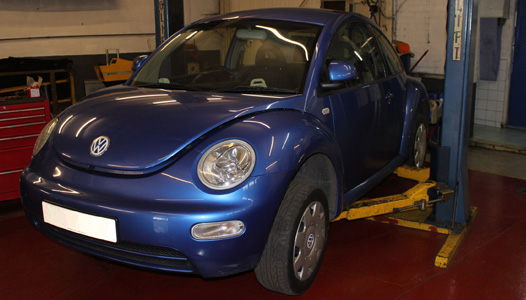
The engine on these vehicles has been identified as an interference type so the likelihood of engine damage if the cambelt breaks is very high. Before carrying out any work disconnect the battery earth cable. It is important that belt installation is performed on an engine at ambient room temperature. Always turn the engine in the normal direction of rotation only (recommended manufacturer’s torque values should always be used). It should also be noted that it is recommended to change the tensioners and pulleys when replacing the cambelt.
A two-post ramp is ideal for carrying out the replacement as a four-post ramp may not provide you with enough clearance. If the vehicle is equipped with alloy wheels then chances are it’ll have locking wheel nuts/bolts, so it’s a good idea to locate the adapter key for these before you start.
Removal
Remove the engine cover and the offside engine under-shield. Slacken the auxiliary belt tensioner and remove the auxiliary belt and the tensioner. If required you can hold the auxiliary tensioner in place with a pin (pictured below).

Undo the bolts securing the coolant expansion tank and stow it to one side (do not disconnect the hoses) then undo the upper timing belt cover (pictured below).
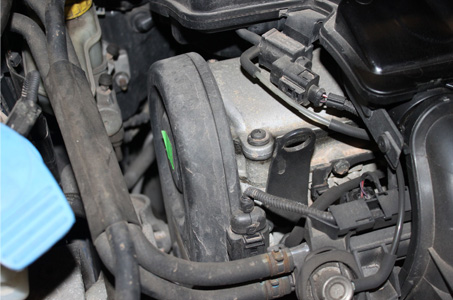
Turn the crankshaft to TDC ensuring the timing marks (pictured below, left) are aligned, including the camshaft sprocket (pictured below, right).
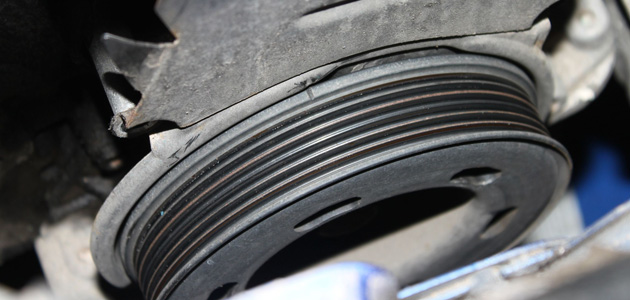
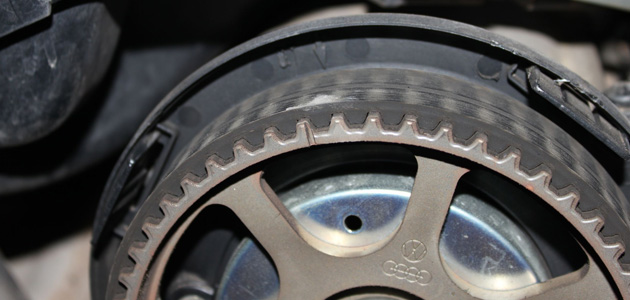
Support the engine and remove both parts of the engine mounting bracket (pictured below) and its fixings. Undo the bolts securing the crankshaft pulley and remove it. Undo and lift out the timing belt centre cover and the lower cover. Slacken the tensioner nut and rotate it anti-clockwise before removing the belt and tensioner.
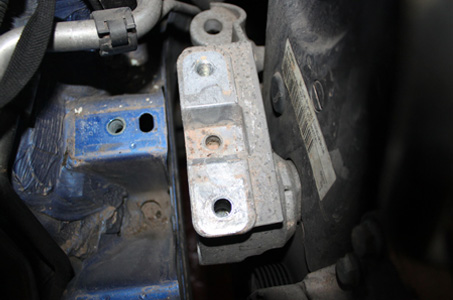
Installation
Ensure that the timing marks are still aligned and install the tensioner. Fit the timing belt to the crankshaft sprocket first and the water pump sprocket second. Ensure the tensioner nut is slackened and that the retainer lug has located correctly in the cylinder block. Turn the tensioner fully anti-clockwise then slowly clockwise until the pointer has aligned with the notch in the baseplate (see pictures below). Tighten the tensioner nut to 20Nm and rotate the engine clockwise for two turns until TDC is reached. Ensure the timing marks are still aligned and that the pointer is still central with the notch on the base-plate – if it isn’t, you will have to repeat the installation procedure again.
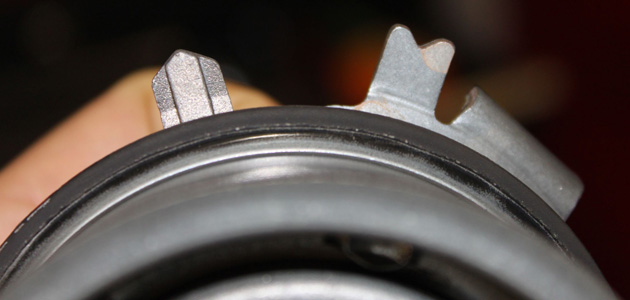
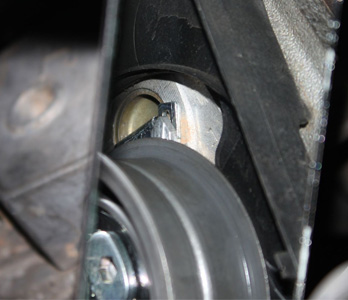
Installation is the reverse of removal, but before re-fitting the auxiliary drive belt, check its condition and its driven components for excessive wear, and consider replacing them. As with any drive belt replacement, before starting the engine it is advisable to turn the engine in the direction of rotation a few times from the crankshaft to make sure the engine doesn’t lock up or any abnormal noises are heard.
All information is supported by INA’s experienced and highly trained technical team on 08457 001100. Additionally you can check out the latest in online support at www.RepXpert.com









